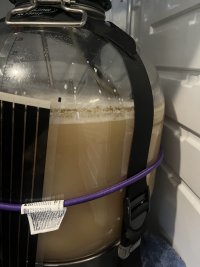I wanted to try something different so I decided to go with a hefeweizen. I found a recipe on morebeer and decided to go with that. I did some quick searching and saw some conversation that doing a decoction mash significantly improves the beer.
Can anyone with experience weigh in? I was planning to brew this using the same process as any other beer, just a normal mash for 60 minutes. I've never done a docoction mash, and will be brewing in an Anvil Foundry in my garage, so I may not have all of the equipment to do so, but if I do, then maybe I will try
Thanks!
Can anyone with experience weigh in? I was planning to brew this using the same process as any other beer, just a normal mash for 60 minutes. I've never done a docoction mash, and will be brewing in an Anvil Foundry in my garage, so I may not have all of the equipment to do so, but if I do, then maybe I will try
Thanks!




















![Craft A Brew - Safale S-04 Dry Yeast - Fermentis - English Ale Dry Yeast - For English and American Ales and Hard Apple Ciders - Ingredients for Home Brewing - Beer Making Supplies - [1 Pack]](https://m.media-amazon.com/images/I/41fVGNh6JfL._SL500_.jpg)





































